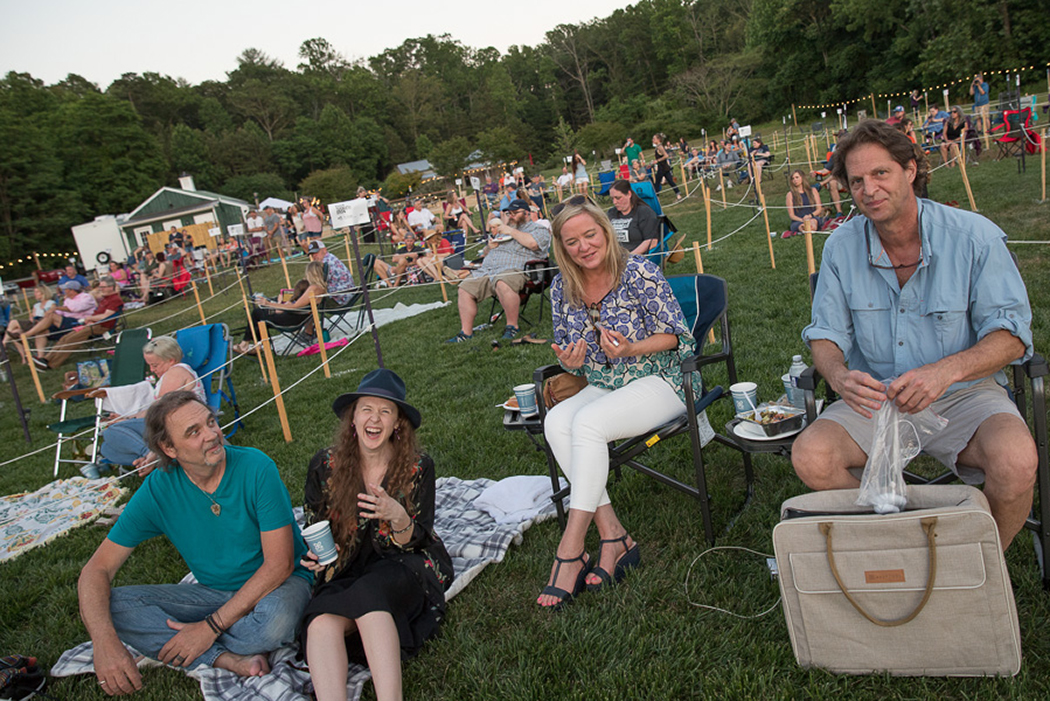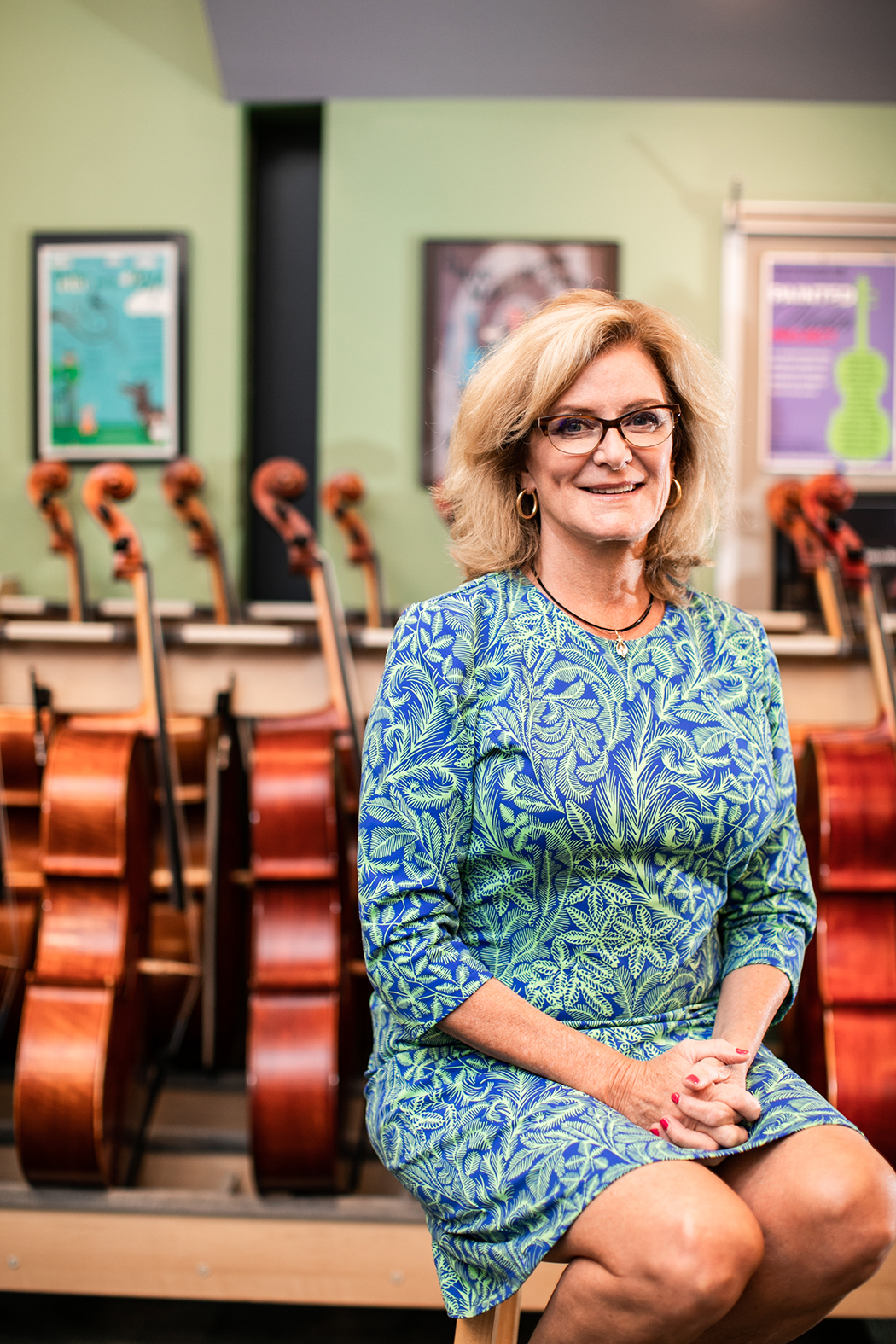When Kate Tamarkin was an undergraduate at Southern California’s Chapman University, orchestra conductor was not on her list of career choices. “As a female back then, it never occurred to me to even want to [do that],” the music director and conductor of the Charlottesville Symphony at the University of Virginia says. But she was studying music education, and one of the requirements for getting her teaching credential was completing a conducting course.
“I dreaded it,” she says, smiling at the memory. “I tried everything to get out of that class, and I didn’t know how I’d get through it.” Turns out Tamarkin did more than get through it—when she stood before a group of musicians for the first time, “a match was struck, and there was fire,” she recalls.
Kate Tamarkin: The Farewell Concerts
April 22
Old Cabell Hall
April 23
Martin Luther King Jr. Performing Arts Center
Dressed in purple and seated in a conference room at the orchestra’s office on West Main Street, the charismatic Tamarkin ponders her retirement this spring, following 11 years at UVA. She says that several decades after that first college conducting gig, she considers herself to literally be a conductor—something that channels music to the musicians, who express their energy to the audience, which has an emotional response that comes back to the conductor and completes the circuit. “When a concert is going well, my back gets all warm, and it’s not just the lights; I can feel that the circuit is complete,” she says.
Daniel Sender, a professional violinist and the orchestra’s concertmaster, says Tamarkin’s energy also extends to members of the symphony. “She has such a warmth from the podium, which is not to say she’s musically light,” he says. “She’s very intense, but her warmth makes the symphony an inviting and open space to make music.” And given the makeup of the group—professionals, students and members of the community—“it takes a very special person to guide those forces together,” Sender says.
Due to the current search for her successor, audiences haven’t seen Tamarkin in action since September, when she conducted the first concert of the 2016-17 season. The finalists for her job—Benjamin Rous, Adam Boyles and Cheung Chau—have been at the podium for this season’s middle three concerts, but Tamarkin will return to lead the orchestra for the final time on April 22 and 23, in a program that includes Wagner’s Overture to Die Meistersinger and Elgar’s Enigma Variations.
In reflecting on her tenure at UVA, Tamarkin points first to the musicians. “We ask a lot of them, and they give, and keep giving,” she says. “They are a tremendously talented set of people with generosity of spirit and a real commitment to music.”
She’s also enjoyed her time as a professor in the McIntire Department of Music and takes pride in having several students who have gone on to become conductors, at least one of whom started out studying economics at UVA. “I poach econ majors!” Tamarkin says with glee. “It’s quite fun; you never know where the talent is going to pop up.”
Another highlight for Tamarkin is the symphony’s youth concerts, which are a priority “because arts funding in the schools is diminishing, and it falls to other organizations to fill the gap,” she says. Elizabeth Roberts, a professional bassoon player and instructor who’s been with the orchestra for 16 years, collaborates with Tamarkin on kid-friendly scripts.
“We include lots of superheroes,” Roberts says. “And we find ways for kids to hear classical pieces that they have maybe heard on TV commercials, or something else that’s very popular. We hope our narrative helps them understand the music.”
The woman who taught herself to play the French horn as a young girl, considers Mozart a “cherished friend,” and was selected by Leonard Bernstein early in her career to lead the Chicago Symphony while he was there as a guest conductor, says she has no intention of halting her own pursuit of music when she retires after nearly four decades at the podium. Tamarkin is a certified music practitioner who plays the harp for critically ill or dying patients, and she is the creator and program coordinator of Hospice of the Piedmont’s Music by the Bedside. She’s also a musician in residence at UVA Medical Center and she plays regularly at Sentara Martha Jefferson Hospital.
“It’s hard to explain the magical, soothing effect of the harp,” says Tamarkin. She recently told WVTF radio that “in many cultures, they play someone out, they sing someone out, they chant someone out. …We try to watch the patient’s breathing to read all those nonverbal and verbal signals that we can receive and then match the music to the condition the patient is in, and then, hopefully, help them relax, to get to a place where the whole experience is easier.”
One experience that won’t be easy for many is Tamarkin’s departure from UVA.“Every leader brings their own style,” Roberts says. “Kate brings a great joy for the music and a joy for what she does as a conductor, educator and artist. We will all miss that joy.

















